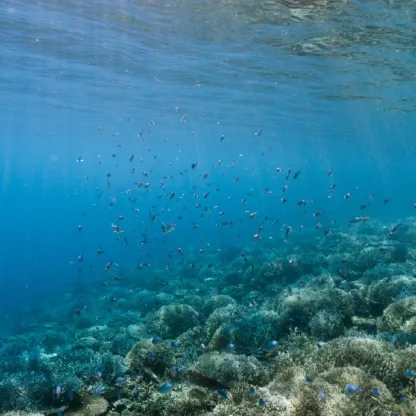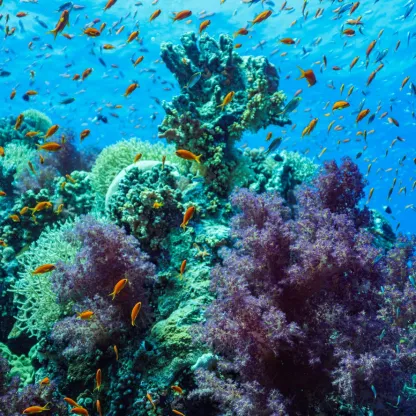2025 has proven to be a pivotal year for oceans on the global stage. David Attenborough’s latest documentary ‘Ocean’ launched to great fanfare; the UN Ocean Conference concluded with the High Seas Treaty achieving ratification by over 60 countries, and looking ahead the COP30 climate conference in Brazil is expected to place significant emphasis on the role of oceans in climate action. In Greenbank’s latest whitepaper, Ethical, Sustainable and Impact Researcher Charlie Young shares his take on what he describes as “the world’s most undervalued natural asset".

Is blue the new green? The role of oceans in a sustainable future
Article last updated 5 November 2025.

Charlie Young
Ethical, Sustainable and Impact Researcher
The ocean covers 70% of the Earth’s surface, holding 97% of its water, 80% of all life on Earth and producing 50% of the oxygen we breathe. It drives weather patterns, stabilises temperature and shapes the Earth's chemistry. Yet, when considering the drivers and impacts of climate change most of us seem to focus on life on land. In reality, the ocean acts as the planet’s largest carbon sink through its uptake and redistribution of carbon dioxide and heat. In total, the ocean absorbs 30% of all carbon dioxide released into the atmosphere from human activities while, for comparison, the Amazon rainforest absorbs an estimated 5%.
When considering oceanic resilience, it is also paramount that we recognise the importance of marine biodiversity. As stated by economist Sir Partha Dasgupta, just as diversity within a portfolio of financial assets reduces risk and uncertainty, diversity within a portfolio of natural assets increases nature’s resilience to shocks and reduces the risks to nature’s services.
However, extreme environmental conditions have become far more intense in recent decades, placing enormous stress on the planet’s aquatic ecosystems. Today, our oceans are vulnerable to the ‘triple threat’ of extreme heating, a loss of oxygen, and acidification. The drivers of these threats are also creating feedback loops that further destabilise ocean ecosystem services and risk triggering climate tipping points.
Accelerating climate change is causing a profound impact upon ocean ecosystems that, according to climate scientists at Princeton University, is “driving extinction risk higher and marine biological richness lower than has been seen in Earth’s history for the past tens of millions of years”. For example, between 1970 and 2012, marine populations declined by almost 50%, according to WWF’s Living Blue Planet report. Without ocean health and aquatic biodiversity, the processes which underpin human wellbeing will be entirely disrupted.
“If life in the oceans were to disappear, human life would disappear.”
Sir Partha Dasgupta, 2021, The Economics of Biodiversity: The Dasgupta Review.
So why are businesses not talking more about our shared dependence on oceans? Despite the undeniable link between nature and the economy, ocean health has not appeared near the top of most company agendas to date. However, we now find ourselves at a turning point in time. A developing bank of science is highlighting the systemic threats our oceans and planet face, and this is increasingly being recognised amongst governments, policymakers, company boards, and the general public.
“Achieving sustainable ocean economies goes beyond reaching environmental sustainability. Intrinsically connected with many other SDGs, the conservation and sustainable use of the ocean needs to unlock sustainable development across social, environmental and economic dimensions.”
OECD, 2020, Sustainable Ocean for All: Harnessing the Benefits of Sustainable Ocean Economies for Developing Countries. The Development Dimension
While diving into our research on this topic, we have explored the importance of oceans, the reasons behind ocean health decline, the role of businesses and investors, and the sustainable blue economy. Our full sustainable oceans research paper is now available; download here.
One emerging trend seems to show that 'blue' finance is around a decade behind 'green' finance, which we have watched boom following the signing of the Paris Agreement in 2015. If blue truly is the new green, then this presents some exciting opportunities. As we observe similar patterns and catalysts such as the signing of the 2022 Kunming-Montreal Global Biodiversity Framework or the 2023 High Seas Treaty, financing a sustainable blue economy has increasing potential to allow investors to generate financial returns while supporting projects and businesses contributing to climate change mitigation and adaptation, as well as biodiversity protection. Looking forward, we eagerly expect to see a growing pool of credible and scalable investment opportunities through to 2030.
____




